2023 Volkswagen ID.4 First Drive Review: Locally Sourced, Base is Ace

FAST FACTS
| Motor: | 2x) |
| Battery Capacity: | 62.0 kWh / 82.0 kWh |
| Output: | 295 hp, 339 lb-ft) |
| Transmission: | 1AT, FWD/AWD |
| US fuel economy (MPGe): | 115/99/107 (62 kWh), 104/91/99 (AWD 82 kWh) |
| CAN fuel economy (Le/100KM): | 2.0/2.4/2.2 (62 kWh), 2.3/2.5/2.4 (AWD 82 kWh) |
| Range: | 209 mi (62 kWh), 255 (AWD 82 kWh) |
| Starting Price (USD): | $38,790 (inc. dest.) |
| As-Tested Price (USD): | $38,790 / $52,590 (inc. dest.) |
| Starting Price (CAD): | $45,945 (inc. dest.) |
| As-Tested Price (CAD): | $45,945 / see text (inc. dest.) |
Volkswagen is really taking the “shop local” mindset seriously with the refreshed 2023 ID.4 EV.
When sales started a year and a half ago, North America got its goods from the same place everyone else did: the Zwickau-Mosel plant in Germany. It was, to put it simply, a bottleneck, even before the industry-wide supplier shortages. After an $800-million dollar investment in Chattanooga, Volkswagen has adapted its production facility there to not only build the ID.4, but the batteries that power it. To mark the occasion, the brand has tweaked the ID.4 for the 2023 model year, creating a package unique to North America. Not only that, the Peoples’ Car people have also added a more affordable, smaller-battery option to anchor the lineup.
The changes don’t dramatically alter VW’s dedicated electric SUV. Instead, the result is a quietly competent choice in an increasingly competitive segment. Factor in a bargain price tag—and the possibility of even further rebates in Canada and the US—and the 2023 VW ID.4 has become one of the most appealing packages on the market.
Get a Quote on a New 2023 Volkswagen ID.4What’s new?
With its trip to Chattanooga, the 2023 ID.4’s big news is that entry-level model. A 62-kilowatt-hour battery pack resides under the floor, shortening range to a still-useful 209 miles (336 kilometers). The other figures are still the same: 201 horsepower and 229 pound-feet of torque through the rear wheels via an electric motor and one-speed transmission. The battery is made at the same facility, and has the same exterior dimensions; it simply has nine modules instead of the 82-kWh pack’s dozen. The smaller pack also shaves a couple hundred pounds out of the package, and allows for a lower starting price of $38,790 ($45,945 CAD), including destination.
The localized ID.4 doesn’t alter the dimensions of the established package. There’s been a few subtle tweaks outside, like a switch to gloss black trim pieces and an entirely different eight-color exterior paint lineup—five of which are also available on the Atlas with which the ID.4 shares its production facility. S models also gain standard 20-inch wheels and light-up logos on both ends of the car.
Inside, Volkswagen has dropped in a new standard heathered fabric with leatherette highlights. The higher-trim models go full faux-leather in a choice of Galaxy (black) or Cosmic (a sweet white-and-blue combo). A rejigged center console “better addresses the needs of American customers,” and the previously optional 12.0-inch central touchscreen is now standard on all trims.
2023 Volkswagen ID.4 interior and comfort
Even though this is my first experience driving the ID.4, there’s something pleasantly familiar about it. The door opening is large, and the lateral move into the seat is easy. Large windows, a low cowl, and a big ol’ panoramic moonroof combine for an airy cabin that’s easy to see out of. Material quality and fit and finish are bang on target for the class, even in these pre-production model testers. The AWD Pro S model I spend most of the day in has the black interior, but a poke around the Cosmic interior confirms its the one I prefer. If I didn’t live somewhere that spends about six months battling snow, of course…
SEE ALSO: Kia EV6 vs Hyundai Ioniq 5 Comparison: Sibling RivalryNo matter the interior color scheme, the ID.4 sports supportive seats, with ample cushioning keeping us comfortable, both on the highways leaving Nashville and the snaking roads en route to Chattanooga. A short city drive in a prototype 62-kWh model shows its cloth seats are up to the task, too. I’m even a fan of the mélange fabric, which looks modern and in no way feels “base.” The entry-level model does give up power adjustments, however.
Volkswagen’s remodel of the center console is a mixed bag. I dig the larger cupholders and clever, slot-style wireless charger. Not only does the layout of the latter make it easier to charge devices, but it keeps the screen pointed away from the driver, minimizing distractions. The storage cubby is nice and deep, too. The taller armrest does mean VW has deleted the fold-down armrests from the sides of the seats, however, which some will see as a step back. I’m also not convinced by the semi-detached front portion of the center console. It’s an uncomfortable half-step, as the pass-through between the footwells isn’t large enough to store anything.
The rear seats are comfortable enough for adults, though the sloping roofline means headroom is at a premium, despite the ID.4’s taller shape compared to, say, the Hyundai Ioniq 5. Top trims gain additional climate controls for the second row, as well. Trunk space is average, and every model beyond the base trim uses an adjustable load floor for maximum storage. It’s important to note that the AWD ID.4 has a significant 2,700-pound (1,225-kilogram) towing capacity, a figure higher than any other EV in the class.
2023 Volkswagen ID.4 technology and features
There has been a lot of talk about Volkswagen’s latest infotainment system, specifically consternation about the touch-sensitive controls that accompany it. Those don’t change for the ’23, so the fiddly temperature and volume controls remain. Same goes for the unusual window switches: there are just two for the driver, and a touch-sensitive button controls whether they operate the front or rear windows. Would you get used to both over the course of ownership? Almost certainly. Is it adding unnecessary complication to simple tasks? Also yes.
SEE ALSO: Ford Mustang Mach-E vs Tesla Model Y ComparisonThe infotainment system itself is, much like the rest of the ID.4, pretty straightforward in operation. The 12.0-inch screen is bright and crisp, with a smartphone-style, tile-based menu setup. The animations can be a little choppy, but otherwise the system is easy to use. Special points for one of the quickest (and simplest) wireless Apple CarPlay pairings I’ve yet witnessed; Android Auto is standard and cord-free, too. Another improvement: the native navigation can now add charging stations along the route, and filter by provider, too. Want Electrify America, the VW-owned network that offers three years of free charging to new ID.4 buyers? You got it.
Similarly, the compact instrument panel screen looks great. It’s easy to flit between information, though I wish it were easier to pull up detailed trip info, or the odometer. VW had challenged the assembled journos to a range test, but my drive partner and I had to dig through the central screen find the relevant info.
Like so many other new cars, the ID.4 has a digital voice assistant along for the ride. I found it overly eager, activating numerous times when I had said something that only sort of sounded like “hello ID.”
2023 Volkswagen ID.4 driving impressions
To drive, the 2023 ID.4 is the same as the previous year. The AWD Pro S tester I spend most of the day in continues to use a two-motor setup. It’s good for a combined 295 hp and 339 lb-ft, making the ID.4 more than quick enough for everyday duties. Heading out of town on the highway, the ID.4 AWD is quiet and composed, smoothing out bumps in the road. The steering is light yet direct, making for a consistent, predictable steer. It also has a commendably tight 36.42-foot (11.1-meter) turning circle, so it’s easy to slot into tighter spots.
Once out of the city and tracing the Appalachians, the ID.4 remains firmly on the comfort side of the spectrum, which feels appropriate. There are selectable drive modes, including an AWD-exclusive Traction setup, but the car feels happiest in its default setting. Like most other EVs, the ID.4 keeps its heavy battery pack low in the floor, but the winding road makes it feel much closer to its quoted 4,877-pound (2,212-kg) curb weight. Push further and the ID.4’s soft suspension nibbles away at driver confidence, taking too long to settle from one motion to feel truly ready for the next. There are more appropriate choices in the class for the fun-chasing driver, but realistically, the ID.4’s more relaxed nature is better suited to most buyers’ needs.
Twist the stubby cluster-mounted drive selector to “B” and the ID.4 ups its regenerative braking. It’s still some of the lightest in the class, and it won’t bring the car to a complete stop either, so one-pedal fans will be disappointed. VW says this approach is more efficient, as it requires less energy than fully slowing down then speeding back up. How German.
A short drive in the 62-kWh model shows off a similar driving experience. The single-motor car is slightly slower, but also lighter, so it turns in a little sharper. It feels wholly adequate for day-to-day needs, and 209 miles (336 km) is plenty for most cases.
Updates to the battery chemistry and software have improved charging speeds. The smaller battery is capable of a maximum 140 kW charging speed, while the 82-kWh pack can now hit 170 kW (up from 135 kW). This means both can perform the typical 10–80 percent SoC metric in around 30 minutes on a DC fast charger.
2023 Volkswagen ID.4 pricing and competition
The headline figure for the 2023 ID.4 is certainly the 62-kWh base trim’s very reasonable $38,790 ($45,945 CAD) starting price, including destination. That’s a whole lot of car for the money, including goodies like keyless entry, rain-sensing wipers, wireless charging, the 12.0-inch touchscreen, and a robust driver assist suite. New additions to the latter include driver-initiated lane changes with the adaptive cruise control, and a memory parking feature, which can automatically handle tight parking jobs for regular spots.
In America, the jump up to the 82-kWh battery pack is a cool $5,000, and the addition of a second motor for AWD a further $3,800. From there, the S trim adds another five grand to any of the three permutations, along with the upgraded seating, adaptive headlights, heated steering wheel, 20-inch alloys, panoramic glass roof, hands-free tailgate, and more. Finally, the S Plus trim replaces the old Gradient pack, bringing in tri-zone climate control, a 360-degree camera, and unique exterior design cues for a further $2,500 on the big-battery models only. I spent most of the day in a $52,590 ID.4 AWD Pro S.
Canada’s trim walk is largely similar, though a company spokesperson was quick to point out the Great White North’s preference for AWD is over 90-percent in the class, versus roughly 50-percent in the USA. Nonetheless, the company expects reasonable demand for the $45,945 CAD, rear-drive 62-kWh model, simply because of that price point. The 82-kWh models start from $49,945 CAD (RWD) and $54,945 CAD (AWD), while the range tops out at $63,395 CAD. Crucially, the ID.4 will soon be available across nearly all Canadian dealers, instead of only three provinces (Quebec, British Columbia, and Ontario), and VW Canada will be introducing its centralized VolksKlick online ordering program.
Final Thoughts: 2023 Volkswagen ID.4 First Drive Review
Volkswagen’s iterative approach to the 2023 ID.4 has turned it into the dark horse of the compact EV SUV crowd. It might lack the wow factor of the flashier Ioniq 5 and Kia EV6, or the driving verve of the Ford Mustang Mach-E, but the ID.4’s low-key nature is part of its appeal. This is a practical, spacious, and comfortable compact SUV that just so happens to be all-electric, not the other way around. Factor in the smart interior revisions, increased availability that the localized production will provide, and that super affordable entry-level model, and it’s safe to say more people will open up their eyes and see the sign.
FAQs
How much does the 2023 Volkswagen ID.4 cost?
The updated model can be had from as little as $38,790 ($45,945 CAD).
When can you buy the 2023 Volkswagen ID.4?
First deliveries will begin in a matter of weeks in America.
What is the range on the 2023 Volkswagen ID.4?
Anywhere from 209 to 275 miles (336 to 443 km) depending on battery size and driven wheels.
Become an AutoGuide insider. Get the latest from the automotive world first by subscribing to our newsletter here.
LOVE IT
- Affordable entry-level model
- Very "normal car" feel
- Lots of standard kit
LEAVE IT
- Fiddly touch-sensitive controls
- Not a sporty choice
- Lacks unique, stand-out features

Kyle began his automotive obsession before he even started school, courtesy of a remote control Porsche and various LEGO sets. He later studied advertising and graphic design at Humber College, which led him to writing about cars (both real and digital). He is now a proud member of the Automobile Journalists Association of Canada (AJAC), where he was the Journalist of the Year runner-up for 2021.
More by Kyle Patrick



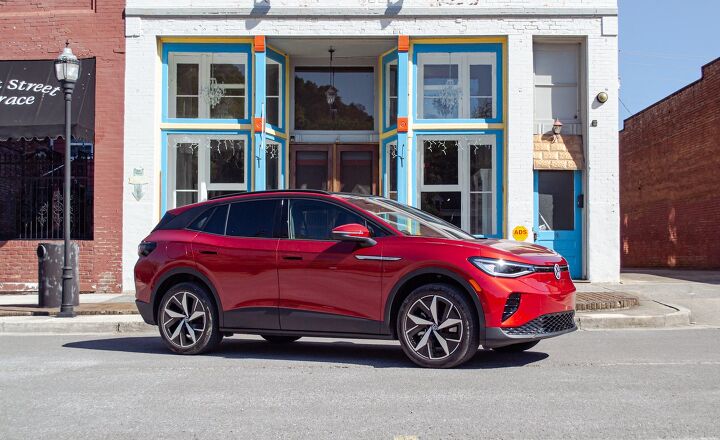

























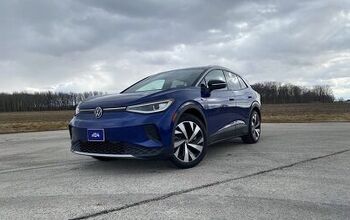
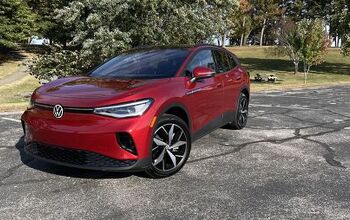
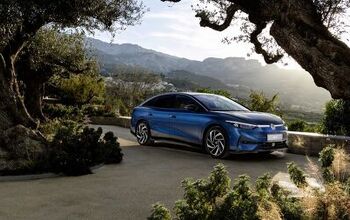
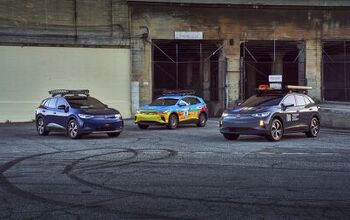
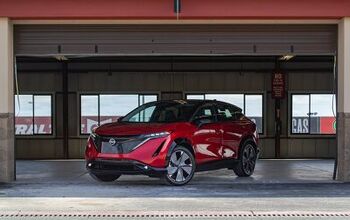
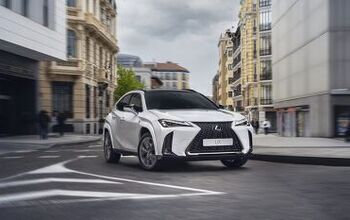


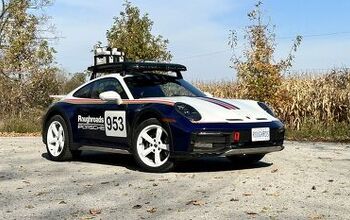
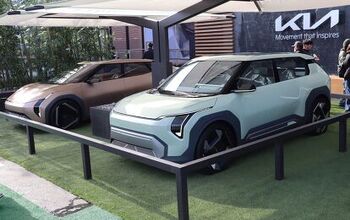
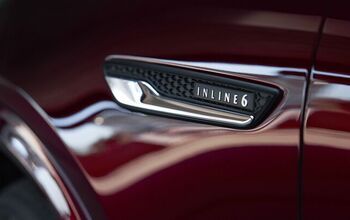


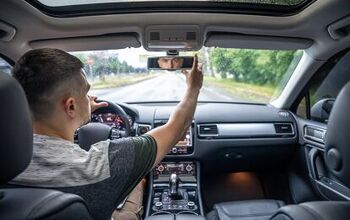

Comments
Join the conversation
you need to caveat your Verbage, from 62-kWh base trims very reasonable $38,790 "Affordable entry level EV" Since I can get a pretty well equipped Hyundai Elantra for $24695 which does everything an ID does and keeps $14,000 in my pocket, I can buy 3500 gallons of gas and 105k miles before the EV even begins to save me money
Not saying you're wrong in general, but maybe wrong example as Elantra is a smaller vehicle in a different class. Also: https://www.thetruthaboutcars.com/cars/news-blog/hyundai-and-kia-s-decade-of-very-troublesome-engines-continues-44497118